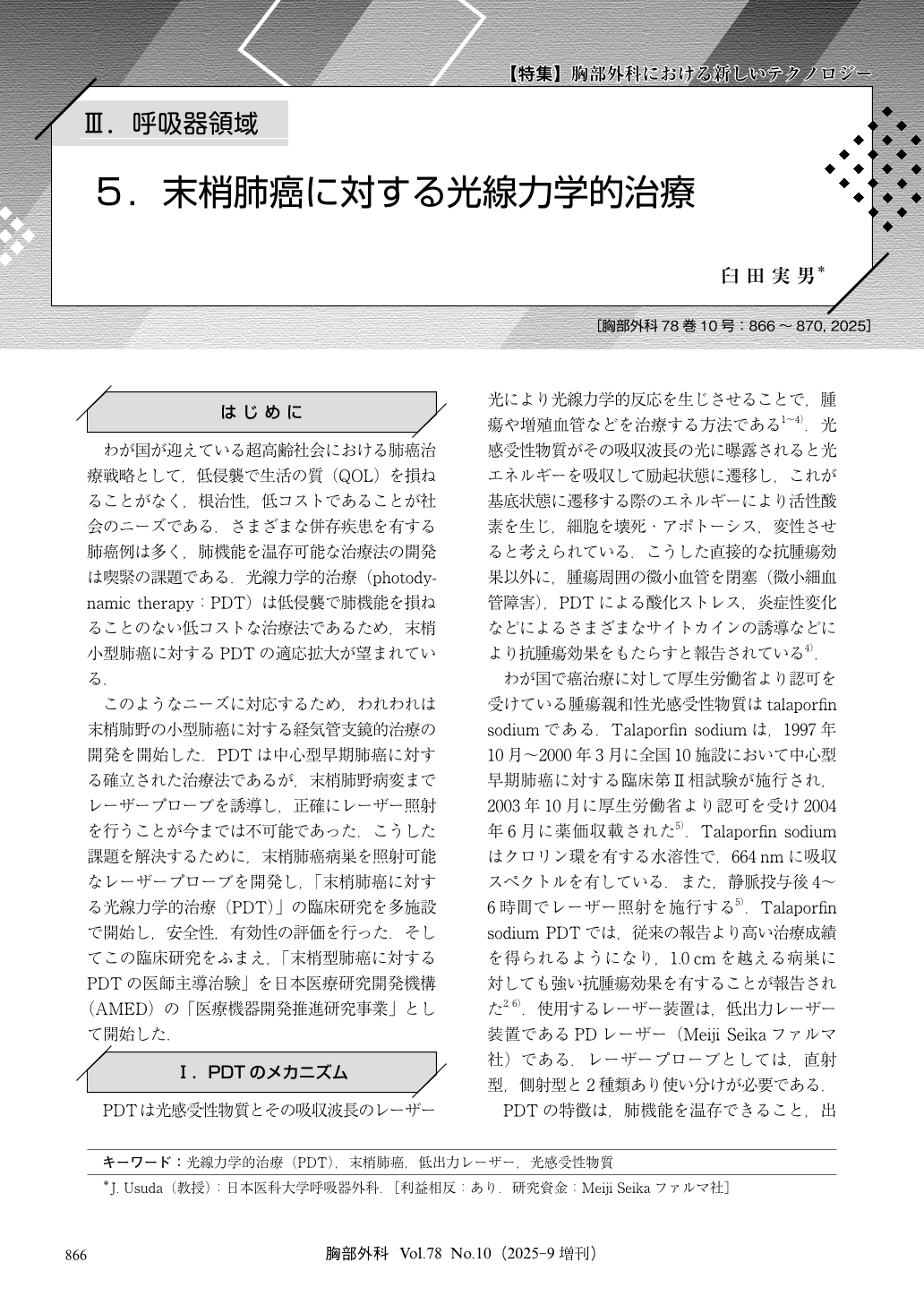Japanese
English
- 有料閲覧
- Abstract 文献概要
- 1ページ目 Look Inside
- 参考文献 Reference
わが国が迎えている超高齢社会における肺癌治療戦略として,低侵襲で生活の質(QOL)を損ねることがなく,根治性,低コストであることが社会のニーズである.さまざまな併存疾患を有する肺癌例は多く,肺機能を温存可能な治療法の開発は喫緊の課題である.光線力学的治療(photodynamic therapy:PDT)は低侵襲で肺機能を損ねることのない低コストな治療法であるため,末梢小型肺癌に対するPDTの適応拡大が望まれている.
Photodynamic therapy (PDT) utilizes a tumor-specific photosensitizer with low-power laser irradiation and this treatment has been established for centrally located lung cancers. However, its application to peripheral type lung cancers remains investigational. Recently, there has been interest in minimally invasive ablative therapies are needed for peripheral type lung cancer and several bronchoscopic ablative modalities are currently under investigation. In this study, a novel laser probe was developed and a multicenter randomized clinical trial was conducted to assessn the safety and efficacy of PDT for peripheral lung cancer, and to establish a novel bronchoscopic treatment.
Patients with non-small cell lung cancer diagnosed by transbronchial lung biopsy with a tumor diameter of 25 mm or less and ineligible for surgery or radiotherapy were enrolled. A randomized controlled trial was conducted with a 2:1 ratio between the PDT group and the best supportive care (BSC) group. The primary endpoint was progression-free survival (PFS), and the secondary endpoint was overall survival (OS). For the BSC group, salvage PDT (sPDT) was permitted for patients with a PD diagnosis and a tumor diameter of 30 mm or less.
Patients were enrolled from May 2020 to May 2023 at six hospitals, with a total of 54 cases included, including 35 cases in the PDT group and 19 cases in the BSC group. Among the cases in the BSC group, sPDT was performed in 14 cases. The median PFS was 12.7 months [95% confidence interval (CI):6.7, 30.0] in the PDT group, and the median PFS was 4.1 months (95% CI:2.9, 7.4) in the BSC group. Kaplan-Meier survival analysis (log-rank test, p=0.0172) demonstrated a significant prolongation of the PFS in the PDT group. The incidence of serious adverse events was 5.9% (two patients) in the PDT group and 0% in the sPDT group.
The findings of this study indicate that PDT for peripheral lung cancer led to a significantly prolongation of PFS and was safe to perform. PDT demonstrated efficacy in preserving lung function, inhibiting lung cancer progression, and maintaining a good quality of life.

© Nankodo Co., Ltd., 2025


